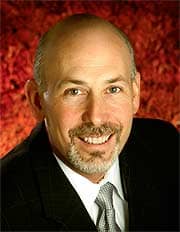 |
Two parallel sociologic phenomena have characterized the transformation of American society from an overwhelmingly white and black one in the mid 20th century to a widely diverse ethnic mix, occasioned by the relocation to the United States of peoples predominantly from Latin America, the Middle East, and Asia. The Immigration Act of 1965 opened the door to individuals possessing skills needed in this country regardless of pedigree, reversing decades old institutional policies favoring entry of individuals of European nationality or ancestry. Accompanying the redirected migratory tide has been a sea change in attitudes toward ethnicity itself. Whereas formerly the urge to quickly conform to the prevalent homogeneous mores of their adapted country had been a paramount goal for new citizens, the past 35 years has seen a celebration of the preservation of enduring cultural traits brought from abroad and yet comfortably accommodated within a widened definition of Americanization. Consequently, immigrant groups, each united by nationality and/or ethnic identification, have become conscious of the notion that the American dream in all its dimensions is a possibility to be realized not only for the eagerly assimilable but also for many members of a particular minority who are not as quick to shed some of their old customs and sensibilities.
Moreover, based on traditions and predilections brought with them, 20th-century immigrants have continued to carry with them their particular talents and preferences, allowing them to populate certain occupations and professions to a greater extent than others. For example, in medicine, despite the fact that emigrants from India rank only sixth among countries in terms of the number of foreign born in the United States, they are far ahead of any other group in terms of the number of physicians practicing in the United States. Today they comprise approximately 6% of the nearly 800,000 MDs and DOs in the nation. At present, 5% of all radiologists are South Asian-Americans. Until 1990, they were overwhelmingly immigrants who received their MD degree from Indian medical schools before transferring here for residency training or to practice as fully fledged specialists. In the past 15 years, however, the sons and daughters of the earlier arrivals, the so-called second generation, have come to constitute the majority of ethnic South Asian radiologists.
The changing membership lists of the RSNA are instructive for the documentation of the increasing popularity of radiology for Americans of South Asian parentage. Although only 5% of radiologists have Indian surnames, 15% of trainees are so identifiable. In fact, if present trends continue, Patel will become the most common last name among all RSNA members, surpassing Smith by 2007.
Given this rapid change in the ethnic makeup of radiologists, what are the levels of participation of South Asians in leadership positions in major organizations of radiology? It is startling to note the absence of individuals of Indian nativity or ancestry among the hierarchy of either the RSNA or the ACR. In 2003, the RSNA had no Asian Indians among its Board of Directors, Office of Board of Trustees, and many of its major committees.
Less than a handful were on either the program or refresher course committee. Similarly, the ACR lacked representatives of this cohort in any leadership position and only 1.5% of its committee members were South Asian.
Examining the mastheads of the two most prominent radiology journals, American Journal of Roentgenology and Radiology , reveals that for the past 5 years only 2% of physicians on the masthead of each are South Asian by birth or ancestry.
What is the explanation for the dearth of radiologists of South Asian heritage in prominent positions in our specialty? Has there been a concerted policy of prejudice? I think or, at least, hope not. Perhaps a sense of underrepresentation is not a potent issue among older radiologists from India, many of whom came to the United States as adults. Such indifference might reflect the historical propensity of overseas Indians to be politically docile, preferring to not make waves as long as they could continue to prosper.
Second-generation Indian Americans are probably not like their mothers and fathers who have been content to be satisfied with a limited expectation of ever achieving positions as statesmen in our specialty. The lack of role models for young radiologists of South Asian background may be discouraging to them. Nonetheless, their growing numbers among the cadre of junior radiologists cannot be ignored. Hence, it is time to redress this imbalance between membership and leadership by seeking qualified and ambitious radiologists of South Asian background to assume ascendant roles in our specialty, at least in relation to their expanding presence as practitioners.
Stephen R. Baker, MD, is chairman of radiology, University of Medicine and Dentistry of New Jersey, Newark.




